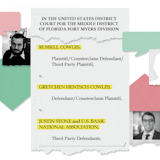Debbie Burke, a 61-year-old mother of five, went to a Baltimore hospital last month where a surgeon put an advanced implantable heart defibrillator made by St. Jude Medical inside her chest.
Fifteen days later, St. Jude and the U.S. Food and Drug Administration recalled the device because the battery may die with almost no warning. Burke soon discovered that although Little Canada-based St. Jude had fixed the problem in 2015 that led to the recall, the company kept selling its stock of older units, including the device she got.
"That bothers me, it does bother me a lot. And I think it would bother anybody," Burke said by phone from her Baltimore home. "They say there's just a small chance [of the battery failing]. … That's not very comforting when you are saying that to somebody whose doctors are saying, 'You need this. This could save your life.' "
There have been two confirmed cases of patients dying after the battery problem caused their St. Jude devices not to administer lifesaving shocks, one in 2014 and another earlier this year. The FDA says the incidence rate of the battery problem is not known, though St. Jude says the rate is very low.
In interviews this week, executives at St. Jude said they moved as quickly as possible with the information they had about the battery problem. They have studied the issue closely since it first was revealed in a journal article in December 2014, and they promptly informed doctors around the world once the official decision to recall the devices was made.
But St. Jude acknowledges that it continued to ship its stock of old devices for 17 months after making a design improvement that reduced the potential for the device to lose power unexpectedly.
It's not clear when St. Jude started selling devices with the new batteries, or if there was a period when both versions were being sold without any disclosure of the difference. The affected devices include various models of Fortify, Unify, and Assura.
Company executives said that when they changed the battery design on May 23, 2015, in response to the issue identified in 2014, they had no way to know that the problem eventually would be widespread enough to spark a recall affecting 350,000 devices implanted in patients throughout the world, Chief Medical Officer Dr. Mark Carlson said.



